Bill of Sale Form Template for Car, Boat & Vehicle [Word & PDF]
Bill of Sale, as the name suggests, is a document which is prepared between 2 parties when both parties agree to certain terms of buying and selling of goods and go about it. Basically, this legal document seals the transaction between the 2 parties, i.e. the Buyer and the Seller, and in case of any dispute or any such legal formalities, the following Printable Bill of Sale shall be used. This document is a simple interpretation of the financial implications of the concerned transaction that has been done which contains the signature of the seller. The buyer’s initials might not be deemed necessary all the time.
Apart from the fact that this carries the financial terms of a certain transaction, it also mentions the date on which monetary value, either in the form of cash or cheque, is exchanged between the 2 parties. Thus, we can imply that the Sample Bill of Sale contains the minute details of the financial turnarounds and the transactional implications on both the parties involved in that particular transaction.
This form is made according to the different States and also segmented according to the various commodities that are bought and sold such as Furniture, Boat, Motorcycle, etc.
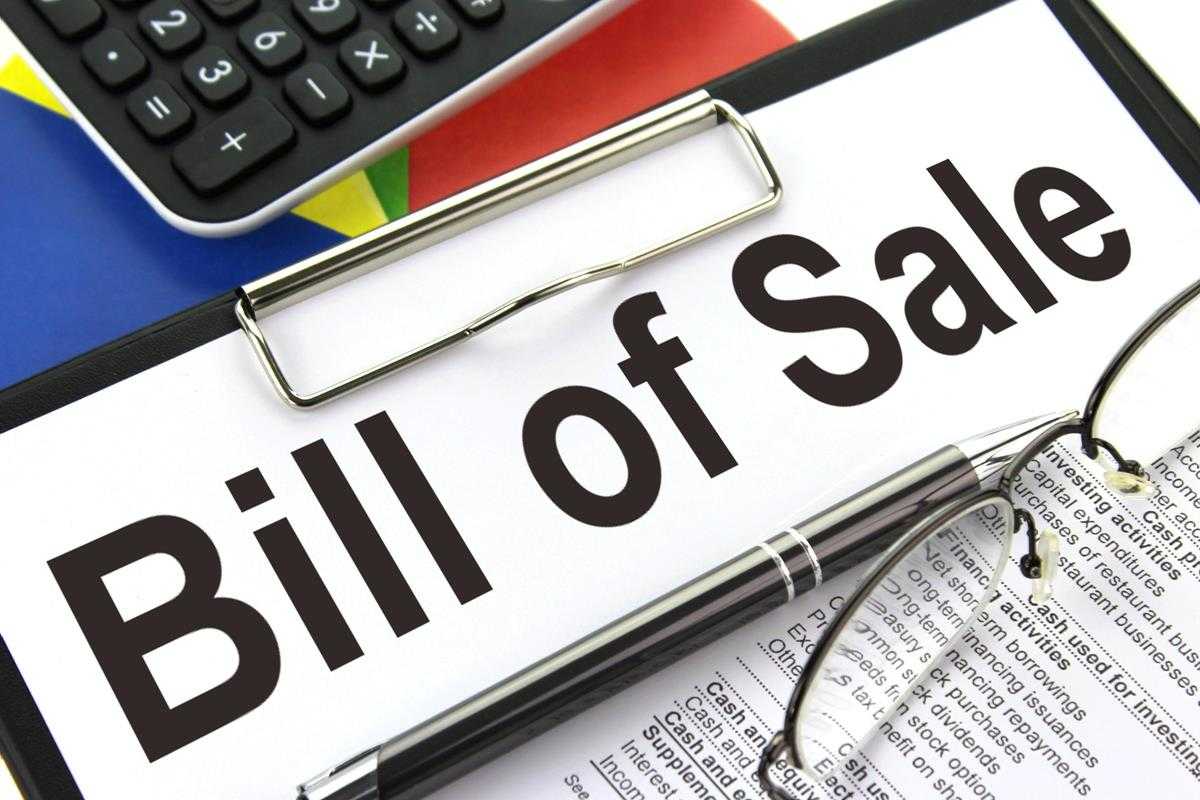
How to write a Bill of Sale?
Goods that are reported and registered require a Generic Bill of Sale specifying the purpose and the financial implications attached to it. Most often, this is required when a private transfer of Motor Vehicles is taking place. This is because Motor Vehicle is a commodity which is transferred from one party to another on a regular basis and this transfer should be recorded in a legal formal, thus, a this is prepared to record such transactions.
This form can be prepared by anyone. If you are one who is requiring it, you don’t have to hire a professional for this job. Follow these steps and you can easily get this ready in your own home at your own convenience.
Therefore, let’s get started with it.
Step 1: Get your necessary documents ready.
In order to start with this, you should get the necessary documents ready for the process. The first and foremost which comes on the list is the document which shall convey the official title of the Motor Vehicle to the seller.
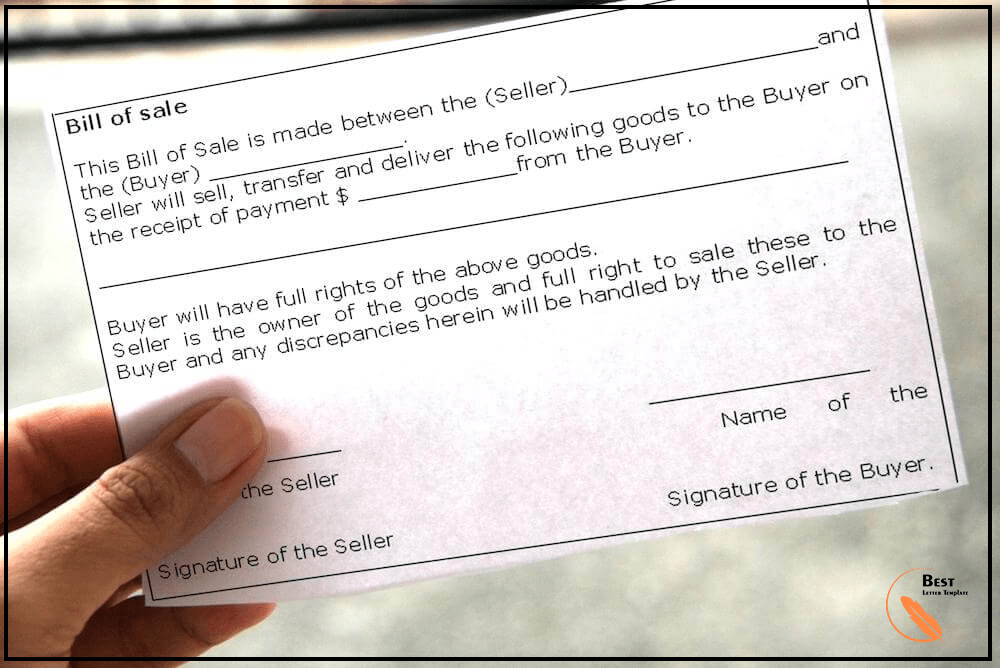
If the person preparing it for something else, then a receipt or proof of purchase will work. Basically, a proof document is required regarding the ownership of that particular document.
Step 2: Get your up-to-date registration certificate.
If you are preparing a Bill for your Motor Vehicle Sale, then a registration certificate is required for the number of years that you have owned it. This document acts as a long-term ownership proof of the Motor Vehicle.
In case of other commodities, you have to disclose a document which shall provide with the specifications of the commodity for which you are preparing the Bill.
Step 3: Mention the Vehicle Identification Number (VIN)
A Bill for Sale for a Motor Vehicle requires a Vehicle Identification Number (VIN) to be mentioned on the document. You will usually find it in the door jamb or under the hood of the car or near the steering wheel of the car. If you cannot find it in these spots, then you can definitely find it in the Manual Book of the car.
Step 4: Characteristics of your Commodity
When preparing a Bill, you need to mention the characteristics of the commodity which you are preparing a Bill for Sale. These characteristics can be the type of material used, the year of manufacturing, the model of the commodity and any special feature of the commodity. You can also mention if the model is a special edition.
The details can also consist of the serial information of the commodity and also the faults and demerits of that particular commodity.
Step 5: Enquire about the Bill of Sale rules in your State.
Remember that each state has different rules when it comes to preparing a Bill, therefore, you should inquire about it and go about the process accordingly.
Thu, still Step 5 you learned about the documents which you have to acquire for the process of preparing a Bill. Further, we will delve into the seller and buyer information which is required on a Bill.
Step 6: Filling the Buyer and Seller Information
This step should look into how to go about filling the Seller and Buyer information. Fill in the full legal name of the Buyer. The same goes for the seller as well. The name should be accompanied by the full residential address of both the parties.
Step 7: Information of any previous owner
If there was an owner of the commodity prior to the current seller, then the details of that person should also be included along with the full legal information of that person.
Now, we move on to the part which actually forms one of the major characteristics of this form, i.e. the disclosing the financial details of the transaction between the 2 parties.
Step 8: Agreement of Price
Determine on the price agreed between the parties prior to the preparation of this. The price decided upon should be in mutual agreement of both parties.
Step 9: Deciding on the Mode of Payment.
After deciding on the price, both the parties should also decide on the mode of payment. This shall be very useful for the future engagements between the parties.
Step 10: Disclose any stipulations
If the commodity has any stipulations of return or warranty attached to it, then it should be mentioned properly which shall help the buyer to go about the procedure.
Now, after these steps which shall look into the steps for formally drafting a form.
Step 11: Heading
The document of the Blank Bill of Sale should have “BILL OF SALE” written on top of it along with the date. Since you are a seller, you have to write in the necessary line which declares that you are the rightful owner of that particular commodity and have the right to sell it.
Step 12: Filling in the details
Include the details regarding the make details, important characteristics, registration details and most importantly the VIN.
Step 13: The End Statement
After disclosing these details, end the letter with a statement which declares that you are selling the commodity to the buyer. Then, disclose the details of any stipulations which are attached to the commodity. These stipulations should include the warranty, return date of the commodity, etc.
Step 14: Statement of Oath
This should end with a statement of an oath which shall make you swear that all the details that have been provided in this is true to its facts and are not construed in any means whatsoever.
Step 15: Details of the 2 parties.
In the end, you should leave space for the seller and buyer to give in details such as the name, signature, signature date, address and phone number of both the parties. Any other statements required by the State Law should be mentioned. After this, the place should be left for the Name, Signature and Seal of a Notary Public, if necessary.
After all these steps, the Bill should be given to the respective parties for proofreading. You can also ask a Third Party to proofread your Bill. Check the details of the letter with the papers of the vehicle. After proofreading, print out the Bill and give it to the buyer to fill in the details.
The sale procedure can be carried out after this. It is best to be carried out in front of the Notary Public.
Now, since you have known the various steps required for the preparation of the Bill, you can also opt for a Bill which is ready-made and can be acquired from any of the government office. The particular document can be procured form your Local Department of Motor Vehicles or from your County Tax Assessor-Collector’s Office.
Types —
- Vehicle
- DMV
- Motorcycle
- Auto
- Boat
- Car
- Snowmobile
Official Bill of Sale form with States
This form for Bill is different for different states. The implications and terms and conditions might be different for different states. Such as, some of the states require you to have a Bill signed in the presence of a Notary while some of them don’t. The Bill in all states is governed by the Bills of Sale Act 1882. Earlier this instrument was used to fraud innocent people but after the required laws were put in place, this act was ceased to be carried out.
| 1.Alabama | 2.Alaska | 3.Arizona |
| 4.Arkansas | 5.California | 6.Colorado |
| 7.Connecticut | 8.Delaware | 9.Florida |
| 10.Georgia | 11.Hawaii | 12.Idaho |
| 13.Illinois | 14.Indiana | 15.Iowa |
| 16.Kansas | 17.Kentucky | 18.Louisiana |
| 19.Maine | 20.Maryland | 21.Massachusett |
| 22.Michigan | 23.Minnesota | 24.Mississippi |
| 25.Missouri | 26.Montana | 27.Nebraska |
| 28.Nevada | 29.New Hampshire | 30.New Jersey |
| 31.New Mexico | 32.New York | 33.North Carolina |
| 34.North Dakota | 35.Ohio | 36.Oklahoma |
| 37.Oregon | 38.Pennsylvania | 39.Rhode Island |
| 40.South Carolina | 41.South Dakota | 42.Tennessee |
| 43.Texas | 44.Utah | 45.Vermont |
| 46.Virginia | 47.Washington | 48.West Virginia |
| 49.Wisconsin | 50.Wyoming |
Incidentally, there are 2 kinds of Bill.
They are:
Absolute Bill
These Bills do not represent any form of security for the commodity and are meant to be documented which shall evidence assignments or transfers or any other assurances. These are meant to be nothing more than a Contract of Sale for the goods covered under the law. These are the most commonly used Bill in the States.
Conditional Bill
This type of Bill refers to the carrying out of any assignment or transfer by creating security for the payment of money. These type of Bills of Law are basically considered as the ones which are exchanged for a collateral value. For example, a transfer of a motor vehicle will only take place if certain conditions get fulfilled or on the exchange of other form of value which stands more important to the seller than any other value as compared to money.
How to Buy or Sell a Vehicle? (Privately)
As mentioned in the beginning, the Bill is usually used for the sale or transfer of Motor Vehicle from one party to another. It is considered as a legal contract which concerns the ownership of a motor vehicle.

Let’s go through the procedures by which you can buy or sell your motor vehicle.
Step 1: Discuss the terms and conditions.
Since the 2 parties have mutually decided to engage in a cordial relationship as a buyer and a seller, they need to finalise the terms of agreement upon which the entire transaction will be carried out. The terms of transaction must be stated upon and should be finalised. The mode of payment should be decided upon and the necessary legal requirements required for it should be discussed to the minute details. Any transaction of cash, as well as trade, should be dealt with by clearing out the details of the same.
Step 2: Obtaining the Vehicle Identification Number (VIN)
The 17 characters VIN should be obtained by the buyer which is usually located on the door jamb or near the windshield. The vehicle’s Title and Registration details also carry the VIN. By obtaining this particular number, you can get the details of any repairs that have been done to this vehicle and the change in part, if any. This will let you know the level of damage the vehicle has faced during its ownership with the seller of the vehicle.
Remember that the VIN only reports the damage that has been registered with an Insurance Company due to the fact that the company covers the damage charges. In case of any other unreported damages, you might go unaware off. Therefore, it is recommended to get it checked by a mechanic for your own convenience.
Step 3: Collect the necessary Vehicle Documents
For the sale to complete, the seller should provide with the title and registration details of the vehicle to the buyer. If in case the vehicle’s title is missing, then a new title can be requested from a DMV office which shall take about 10 to 14 days to arrive.
Other verifications required
- The seller has to disclose the details of the odometer. According to the Federal Law, the vehicles that are under 10 years of age and weighs below 16,000 pounds should be verified by the buyer and the seller should also acknowledge on the form that the mileage and other details have not been tampered with and aren’t defective.
- The buyer should also acquire a copy of the seller’s ID proof such as the Driving License which shall prove that the seller is legally authorised to sell his/her vehicle.
Step 4: Completion of the Sale procedure
After this, the Bill should be prepared which has all the details of the vehicle and the statement and the oath of the Seller who bears full truth of the matter that has been mentioned in the Bill.
The completion of a sale shall be finalised with the exchange of the funds and the signing of the Bill by both the parties at a mutual location upon which the title shall be transferred. If your State requires an attorney to preside over this event, then he/she should be called upon. Sales Tax should be taken care of at the time of sale which is different for different states.
Step 5: Registration by the Buyer
With this, the entire procedure comes to an end when the new owner takes possession of the vehicle and will register the same within a certain time period. He will need the following document to properly register the vehicle as to the new owner. These documents consist of:
- Original copy of the Bill that was signed and exchanged between the Buyer and Seller.
- The certificate of the Title to be issued to the new owner within 30 days.
- Verified copy of the Odometer Disclosure Statement only if the car is younger than 10 years and under 16,000 pounds.
Odometer Disclosure Statement
Federal and State law requires that you state the odometer mileage upon transfer of ownership. Unsuccessful to complete or providing a wrong statement may your conclusion in fines and/or in custody.
[To be completed by the seller]
I/we [Name] state that the odometer mileage indicated for the vehicle described below is [Distance]. And I/we hereby certify to the best of my/our knowledge that (check one statement below that is applicable) the odometer reading is the actual mileage. the odometer reading reflects the amount of mileage in the overabundance of its mechanical limits. The odometer reading is not actual mileage. Warning - odometer discrepancy.
Year of Manufacturer:
Make:
Body Type:
Model:
Vehicle Identification Number:
Printed Name of Seller:
Address of Seller:
Seller's Signature:
Seller's Certification Date:
[To be completed by the buyer]
The printed name of the transferee (buyer):
Address of Buyer:
Buyer's Signature:
Date Completed Form Received:
A proof of the Car Insurance.
ID proof of the owner such as a License or a Passport
A sample of an Odometer Disclosure Statement.
- The required fees.
- The statements of the Emissions Test which form as a requisite requirement only in a few States.
This will commence in the vehicle being registered in the name of the new owner who shall be the new seller if any future Bill is prepared if required.
Is the Bill of Sale same as a Sales Agreement?
The business environment is such a dynamic set-up which consumes in a lot of legalities and formalities that we never could have imagined. This environment gives a platform to a lot of legal paperwork which might sound the same or literally means the same but might be different when it comes to their applicability.
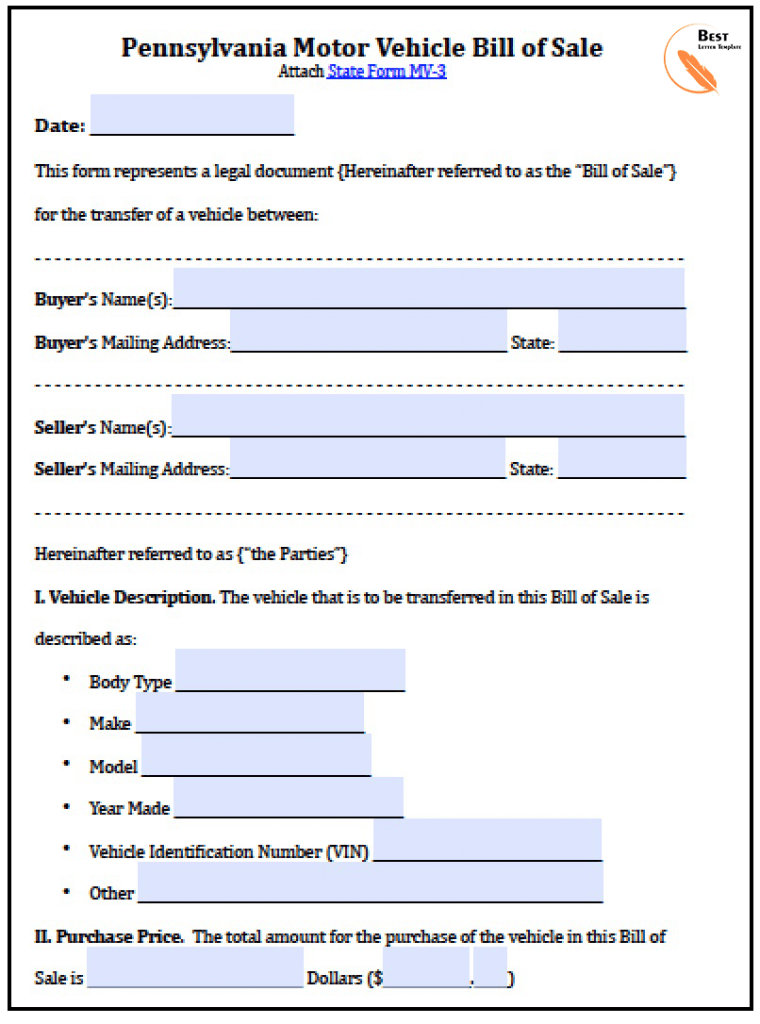
In the same way, there are two terms which are Bill and Sales Agreement which might literally mean the same but are actually different. We got to know about the Bill and its functions. Let’s know how a Bill and a Sales Agreement differs.
By the DEFINITION of the 2 terms
By definition, it means that both are involved in the sale of goods between two parties, coincidentally the buyer and the seller. A Bill pertains to a shift of ownership to the buyer from the seller. This document will be used by the buyer to prove their ownership in the court of law. This allows the buyer to register the commodity in his/her name by producing the document which seals his/her ownership of the commodity.
On the other hand, a Sales Agreement is one which is drafted for a future purchase of goods or services by being limited to certain terms and conditions as mentioned in the agreement. This lays a roadmap for any future transaction between the 2 parties. This will allow the seller to act according to it and go about the process and allow the buyer to scrutinise the procedure.
By the PURPOSE of the 2 terms
As said, a Sales Agreement determines a roadmap for your future sales procedure for a good or service. This allows you to prepare yourself for that and be ready when that has to take place.
A Bill is something which is drafted after the Sales Agreement has been already drafted. It basically passes for the title to be transferred between the 2 parties. It depends on the Sales Agreement to be drafted because the Sales Agreement has got details which are needed in the Bill when it has to be drafted.
By the consideration of the 2 terms
A Sales Agreement is a flexible agreement giving its holders a benefit before entering into the contract. This shall give them a benefit to act according to the agreement and possibly change it afterwards. This is one benefit which it provides to the holders. These agreements are basically drafted for big financial transactions such as major acquisitions and deals. This ensures that both the parties don’t compromise on the deal that is being made.
Contrary to this, a Bill does not provide this flexibility to its holders.
These are the various implications regarding the Bill related to 2 parties who are engaged in such a procedure. Check out the legal requirements of your State and go about the procedures mentioned.
Boat Bill of Sale Form in PDF & Word [Doc.] Format
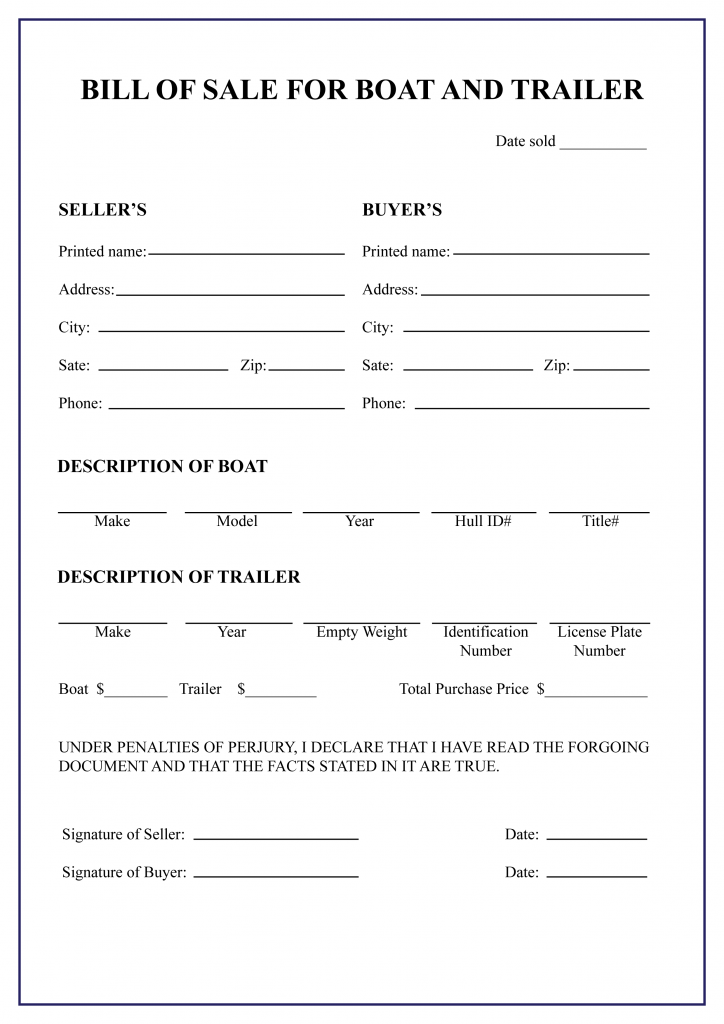
Motor Vehicle Bill of Sale Form Template in PDF & Word [Doc.] Format

Notarized Bill of Sale Form Template in PDF & Word [Doc.] Format

Trailer Bill of Sale Form Template in PDF & Word [Doc.] Format

DMV Bill of Sale Form Template in PDF & Word [Doc.] Format

Related Posts

Illinois Bill of Sale Form for DMV, Motorcycle, Boat– PDF & Word
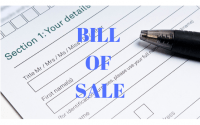
Wisconsin Bill of Sale Form for DMV, Car, Boat – PDF & Word

Minnesota Bill of Sale Form for DMV, Car, Boat – PDF & Word
About The Author
Letter Team
The team behind BestLetterTemplate.com understands the importance of effective communication in today's professional world and strive to provide you with the tools you need to make a lasting impression. Our team of experienced writers has created a wide range of templates for common letters, including recommendations, resignations, and cover letters. All of our templates are completely free to use and are designed to save you time and hassle. Whether you're a student, a recent graduate, or a seasoned professional, we've got you covered.

